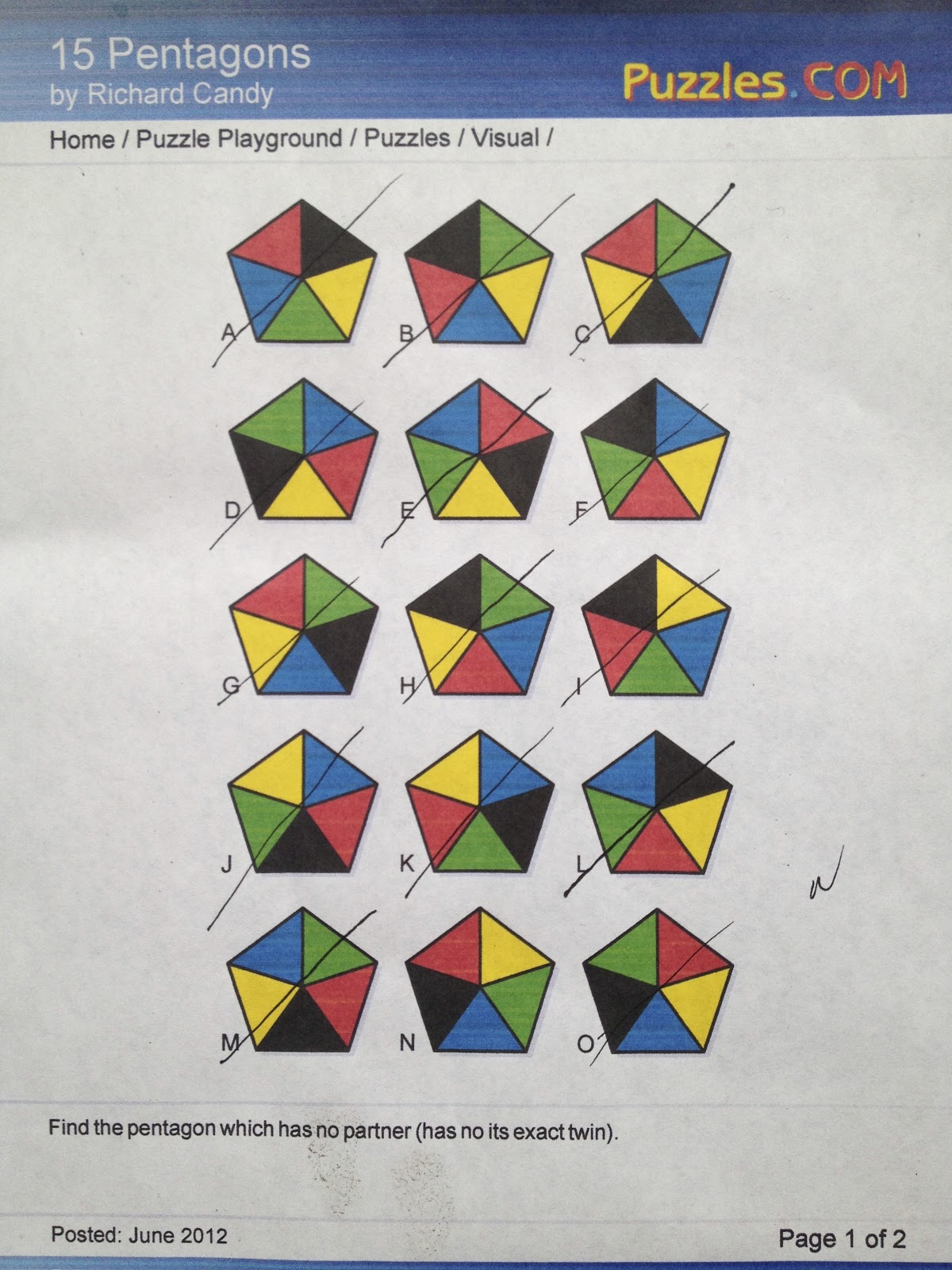Visual Thinking
The first puzzle I chose was Counting Triangles by Henry E.
Dudeney. It was similar to the square counting puzzle we did in class. The star
with a pentagon around it has a bunch of different triangles within it. We had
to locate as many triangles as we could. I came up with 25, and my friend came
up with 25 as well. We used similar techniques of pattern seeking when
searching for triangles. We both began counting the obvious triangles, and
counted each one in a circular motion. We noted that there are sets of
different sized triangles. Each set had five triangles that were exactly the
same. We didn’t find three of the sets. The total amount of triangles in the
pentagon star equals 35.
The second puzzle we did was 15 Pentagons by Richard Candy.
This puzzle has 15 pentagons (A-O). Each pentagon is separated into five
different triangles. Each triangle is colored a different color, each color
appearing in a section. There are seven pairs; meaning 14 of the pentagons have
a twin. There is one that has a unique pattern. We had to find that unique
pentagon. We had to study each pentagon and look for patterns. I used a
matching technique. I looked at pentagon A, and matched it to its twin. This
was basically a process of elimination. My friend began categorizing each
pentagon based on individual traits. By the end, we both had figured out which
one didn’t have a twin.
Answer Keys






No comments:
Post a Comment